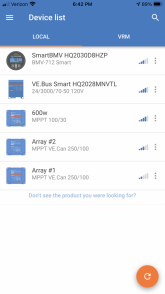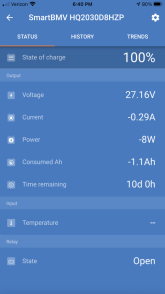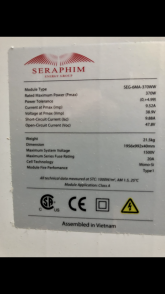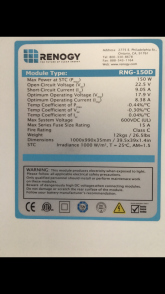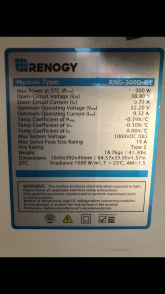chrisski
Solar Boondocker
- Joined
- Aug 14, 2020
- Messages
- 5,167
I'm in the camp that thinks the source was a bad connection / Crimp. There's more I would do.
How did you crimp the wires?
I recommend redoing the battery lugs with quality tinned copper, with a good crimp job, and thicker wires. I am not opposed to soldering cables after they are completed, but have not done them since my crimps are so tight the copper metal fuses together. Trojan has a white paper that says the best way to do battery cables is a good crimp and soldering, and they showed an IR picture to prove it.
IMO, you need to upsize those wiring. I say opinion because I have not done the math. Each Battle Born Battery is supposed to surge to 100 amps, so 8 set up 2S4P would get you 200 amps surge before the BMS kicks in. Also, the 1800 watts you mentioned is about the max that a 15 amp plug will provide, and that's from the inverter, the pull from the battery will be more. My 1300 watt microwave is cooking watts, but pulls 188 from the inverter, which pulls about 2000 watts from the batteries to run it. I mention 200 amps. My system which I erred on the side of caution, I went with a 200 amp fuse for 4/0 wire.
The places you circled are all connectors. The easiest way to get data on heat is an IR gun from a Hardware store; I'm not as brave as I used to be so I don't touch bare wires. The hot spots would nor be good. I notice the connectors are copper. I got tinned connectors to avoid corrosion. I don't know if your copper connectrs have corrosion, yet; they look brand new.
For the ANL fuse, they can be rated to take minutes to blow at the amps they are made for, seconds at twice the their rating, and fractions of seconds after that. I think of them as slow burn fuses because of that. Also, if you did use an audio ANL fuse, those are less expensive and don't have the ABYCC primary battery rating that some other more expensive (Blue Sea, Bussman) fuses are rated for primary battery protection.
For your parallel connection, here's another link that shows a better way to do it: http://www.smartgauge.co.uk/batt_con.html
How did you crimp the wires?
I recommend redoing the battery lugs with quality tinned copper, with a good crimp job, and thicker wires. I am not opposed to soldering cables after they are completed, but have not done them since my crimps are so tight the copper metal fuses together. Trojan has a white paper that says the best way to do battery cables is a good crimp and soldering, and they showed an IR picture to prove it.
IMO, you need to upsize those wiring. I say opinion because I have not done the math. Each Battle Born Battery is supposed to surge to 100 amps, so 8 set up 2S4P would get you 200 amps surge before the BMS kicks in. Also, the 1800 watts you mentioned is about the max that a 15 amp plug will provide, and that's from the inverter, the pull from the battery will be more. My 1300 watt microwave is cooking watts, but pulls 188 from the inverter, which pulls about 2000 watts from the batteries to run it. I mention 200 amps. My system which I erred on the side of caution, I went with a 200 amp fuse for 4/0 wire.
The places you circled are all connectors. The easiest way to get data on heat is an IR gun from a Hardware store; I'm not as brave as I used to be so I don't touch bare wires. The hot spots would nor be good. I notice the connectors are copper. I got tinned connectors to avoid corrosion. I don't know if your copper connectrs have corrosion, yet; they look brand new.
For the ANL fuse, they can be rated to take minutes to blow at the amps they are made for, seconds at twice the their rating, and fractions of seconds after that. I think of them as slow burn fuses because of that. Also, if you did use an audio ANL fuse, those are less expensive and don't have the ABYCC primary battery rating that some other more expensive (Blue Sea, Bussman) fuses are rated for primary battery protection.
For your parallel connection, here's another link that shows a better way to do it: http://www.smartgauge.co.uk/batt_con.html




